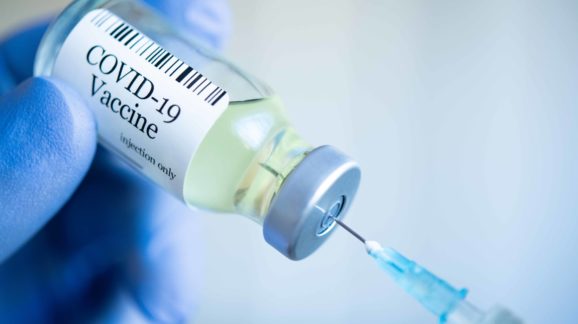A Path to Better Days
Thanks to the innovative power of our market economy, we’re closer to the end of the pandemic than to the beginning.
It seems like a lifetime, but it was only one year ago that the world learned about a cluster of pneumonia cases linked to a live animal market in Wuhan, China. The cause: a new coronavirus, SARS-CoV-2, that leads to a disease called Covid-19. Fast forward one year, and the U.S., as of mid-December, has seen more than 300,000 Covid-19 deaths and more than 17 million confirmed cases—but also remarkable scientific innovation and reasons for optimism.
Much has changed. An economy that was humming along with record-low unemployment was voluntarily shut down in an attempt to mitigate viral spread and the death toll. Unemployment soared to depression levels, and GDP cratered. In many areas, a third of small businesses have permanently closed. Children have missed nearly a year of in-person school, with short- and long-term effects on their social and educational development and economic prospects. The pandemic deepened political fissures and became the leading issue in the 2020 election, likely leading to President Donald Trump’s reelection defeat.
People were admonished to “follow the science,” though the science was unclear and constantly in flux. The pandemic has confounded experts’ recommendations and predictions. Infections, hospitalizations, and deaths are up around the country, regardless of the approaches that different states have taken. New Mexico, for example, adopted aggressive restrictions, including a mask mandate, self-quarantine orders for travelers, and a ban on public gatherings early on. Yet statewide infections and deaths climbed to new heights in October and November.
New York, where Governor Andrew Cuomo prides himself on his tough-love approach to public health, has the second-highest number of deaths per 100,000 citizens (184) in the country, edged out only by New Jersey (201). Florida has faced considerable criticism for imposing restrictions too late and for opening up too soon; yet the Sunshine State has less than half as many deaths (94) per 100,000.
Worldwide, the picture is similar. The U.S. has 96 deaths per 100,000 population, less than Belgium (158), Italy (111), and Spain (104), but roughly in line with the United Kingdom (97), the Czech Republic (95), and France (91). Sweden, relentlessly criticized for not taking adequate measures to limit infections, has only four-fifths as many deaths per capita (79) as the United States. Cases and deaths are now surging worldwide.
Nonetheless, we now appear closer to the end of the pandemic than to the beginning, thanks to the innovative power of the market to discover, develop, and provide lifesaving products. It usually takes ten years to develop vaccines for new diseases caused by novel viruses. Now, only ten months after SARS-CoV-2 was identified, 53 Covid-19 vaccines are being tested worldwide. Nearly a dozen have reached Phase III, the most advanced trial stage. Two companies, Pfizer and Moderna, already have demonstrated that their vaccines work at more than 90 percent effectiveness, with limited and mild side effects, and have just received emergency-use authorizations from the Food and Drug Administration. The companies say that they can supply approximately 45 million doses, enough to vaccinate more than 20 million people, before the end of 2020, and more than 1 billion doses in 2021. A third company, Astra-Zeneca, is not far behind.
Read the full article at City Journal.
